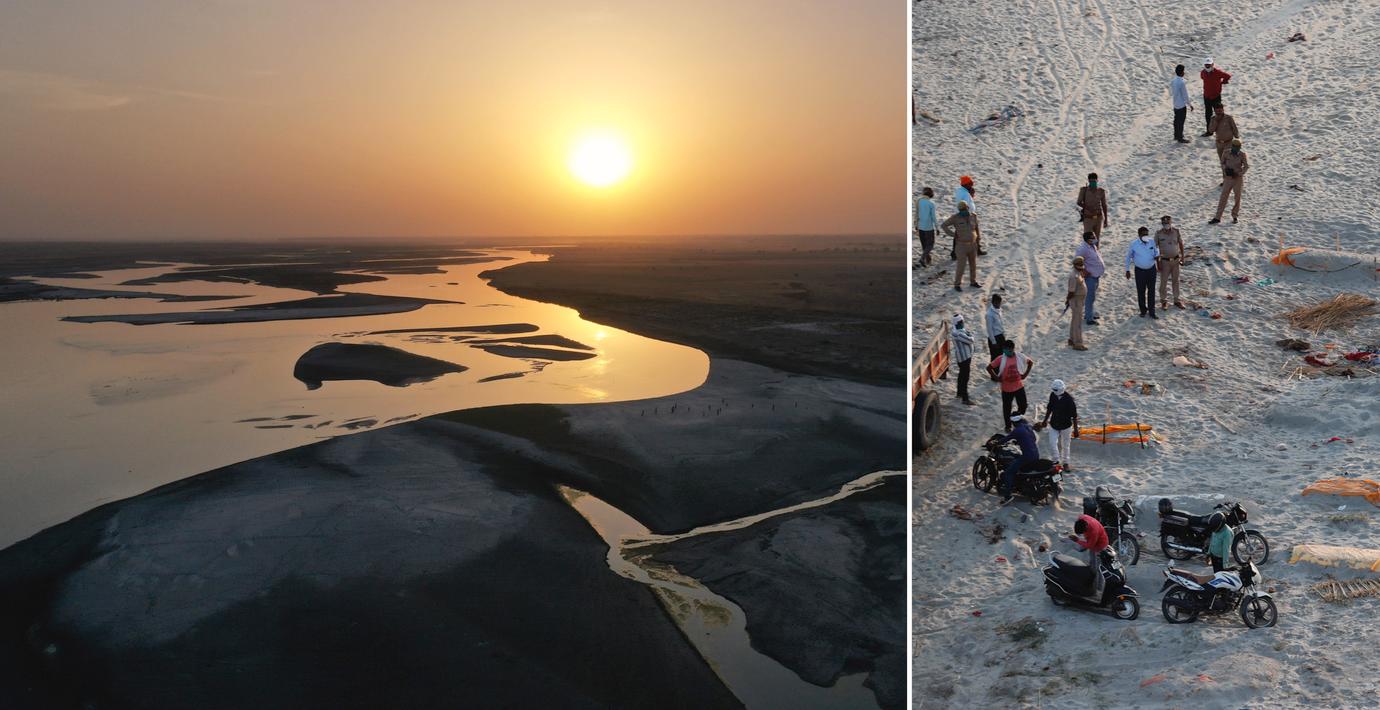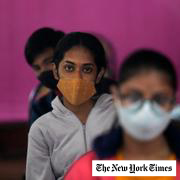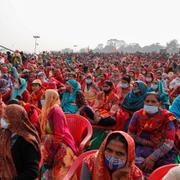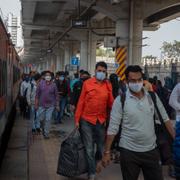
Dyr ved och stigma tvingar fram begravningar i Ganges
Över 2 000 döda kroppar har hittats längs den indiska floden Ganges de senaste två veckorna. Det skriver The Guardian med hänvisning till uppskattningar från journalister och lokalbefolkningen.
En stor del av dem tros ha blivit offer för pandemin, men hur många är omöjligt att säga. Förklaringen till att de anhöriga lägger kropparna i floden är flera: Kostnaden för veden som behövs för att kremera kropparna är hög. Och stigmat kring att ha smittats med coronaviruset är stort.
– När vi försökte köpa ved för kremeringen blev vi avvisade. Ingen ville hjälpa oss eftersom de misstänkte covid, säger Narsingh Kumar, som nyligen tvingades begrava två av sina bröder i floden, till tidningen.
bakgrund
Ganges
Wikipedia (en)
The Ganges ( GAN-jeez) or Ganga ( GUNG-gə, Hindustani: [ˈɡəŋɡaː]) is a trans-boundary river of Asia which flows through India and Bangladesh. The 2,525 km (1,569 mi) river rises in the western Himalayas in the Indian state of Uttarakhand, and flows south and east through the Gangetic Plain of North India into Bangladesh, where it empties into the Bay of Bengal. It is the third largest river on Earth by discharge.The Ganges is the most sacred river to Hindus. It is a lifeline to millions of Indians who live along its course and depend on it for their daily needs. It is worshipped as the goddess Ganga in Hinduism. It has also been important historically, with many former provincial or imperial capitals (such as Pataliputra, Kannauj, Kara, Kashi, Patna, Hajipur, Munger, Bhagalpur, Murshidabad, Baharampur, Kampilya, and Kolkata located on its banks or the banks of tributaries and connected waterways. The main stem of the Ganges begins at the town of Devprayag, at confluence of the Alaknanda, which is the source stream in hydrology because of its greater length, and the Bhagirathi, which is considered the source stream in Hindu mythology.The Ganges is threatened by severe pollution. This poses a danger not only to humans but also to animals; the Ganges is home to approximately 140 species of fish and 90 species of amphibians. The river also contains reptiles and mammals, including critically endangered species such as the gharial and South Asian river dolphin. The levels of fecal coliform bacteria from human waste in the river near Varanasi are more than a hundred times the Indian government's official limit. The Ganga Action Plan, an environmental initiative to clean up the river, has been considered a failure which is variously attributed to corruption, a lack of will in the government, poor technical expertise, environmental planning and a lack of support from the native religious authorities.
Omni är politiskt obundna och oberoende. Vi strävar efter att ge fler perspektiv på nyheterna. Har du frågor eller synpunkter kring vår rapportering? Kontakta redaktionen



